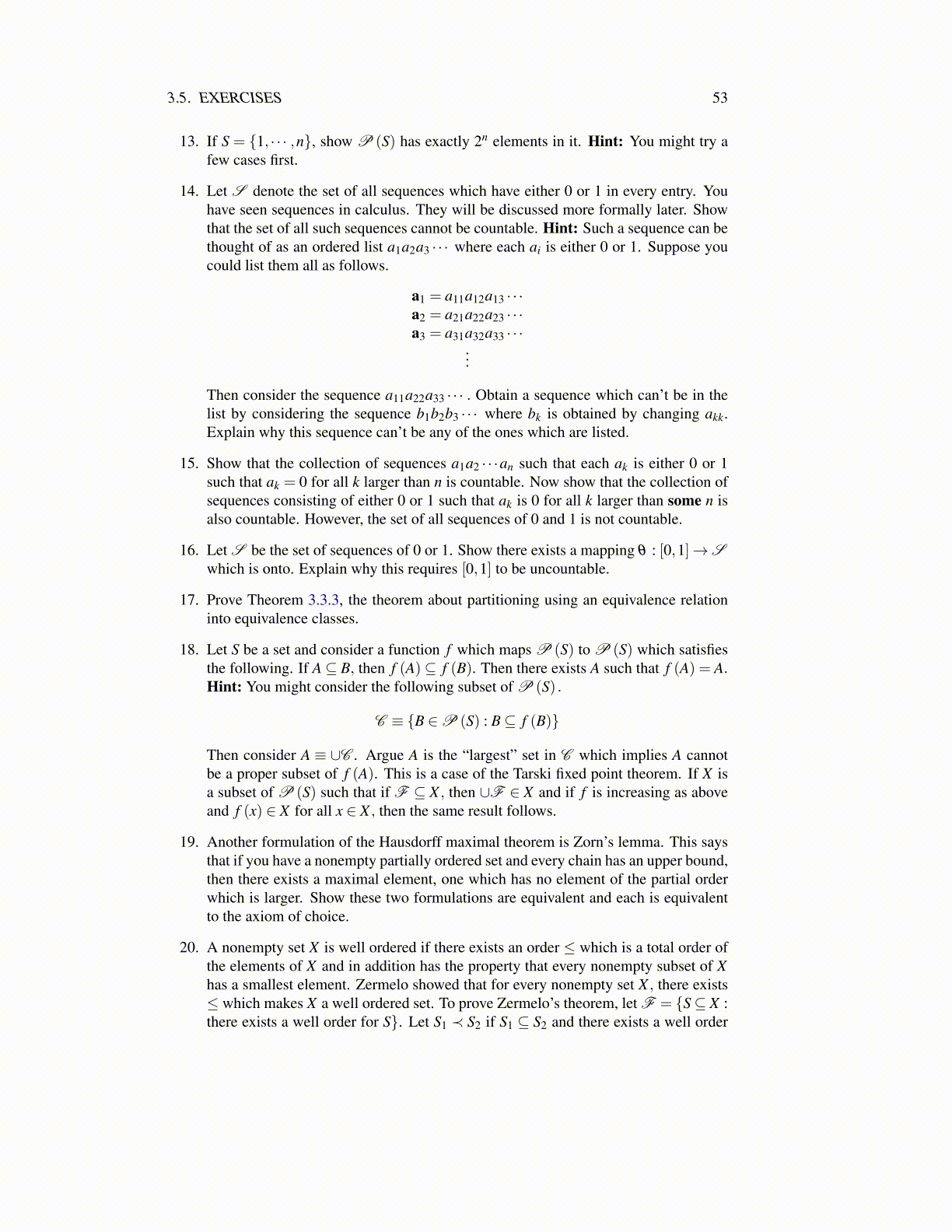
Chapter 4
Functions and Sequences4.1 General Considerations
As discussed earlier, the concept of a function is that of something which gives a uniqueoutput for a given input.
Definition 4.1.1 Consider two sets, D and R along with a rule which assigns aunique element of R to every element of D. This rule is called a function and it is denotedby a letter such as f . The symbol, D( f ) = D is called the domain of f . The set R, alsowritten R( f ) , is called the range of f . The set of all elements of R which are of the formf (x) for some x ∈ D is often denoted by f (D) . When R = f (D), the function f is said tobe onto. It is common notation to write f : D( f )→ R to denote the situation just describedin this definition where f is a function defined on D having values in R.
Example 4.1.2 Consider the list of numbers, {1,2,3,4,5,6,7} ≡ D. Define a functionwhich assigns an element of D to R≡ {2,3,4,5,6,7,8} by f (x)≡ x+1 for each x ∈ D.
In this example there was a clearly defined procedure which determined the function.However, sometimes there is no discernible procedure which yields a particular function.
Example 4.1.3 Consider the ordered pairs, (1,2) ,(2,−2) ,(8,3) ,(7,6) and let the domainbe D≡{1,2,8,7} , the set of first entries in the given set of ordered pairs, R≡{2,−2,3,6} ,the set of second entries, and let f (1) = 2, f (2) =−2, f (8) = 3, and f (7) = 6.
Sometimes functions are not given in terms of a formula. For example, consider thefollowing function defined on the positive real numbers having the following definition.
Example 4.1.4 For x ∈ R define
f (x) ={ 1
n if x = mn in lowest terms for m,n ∈ Z
0 if x is not rational(4.1)
This is a very interesting function called the Dirichlet function. Note that it is notdefined in a simple way from a formula.
Example 4.1.5 Let D consist of the set of people who have lived on the earth except forAdam and for d ∈ D, let f (d)≡ the biological father of d. Then f is a function.
This function is not the sort of thing studied in calculus but it is a function just thesame. When D( f ) is not specified and f is given by a formula, it is understood to consistof everything for which f makes sense. The following definition gives several ways tomake new functions from old ones.
Definition 4.1.6 Let f ,g be functions with values in F. Let a,b be points of F.Then a f + bg is the name of a function whose domain is D( f )∩D(g) which is definedas (a f +bg)(x) = a f (x)+ bg(x) . The function f g is the name of a function which is de-fined on D( f )∩D(g) given by ( f g)(x) = f (x)g(x) . Similarly for k an integer, f k is thename of a function defined as f k (x) = ( f (x))k . The function f/g is the name of a func-tion whose domain is D( f )∩{x ∈ D(g) : g(x) ̸= 0} defined as ( f/g)(x) = f (x)/g(x) . Iff : D( f )→ X and g : D(g)→ Y, then g ◦ f is the name of a function whose domain is{x ∈ D( f ) : f (x) ∈ D(g)} which is defined as g◦ f (x)≡ g( f (x)) . This is called the com-position of the two functions.
53